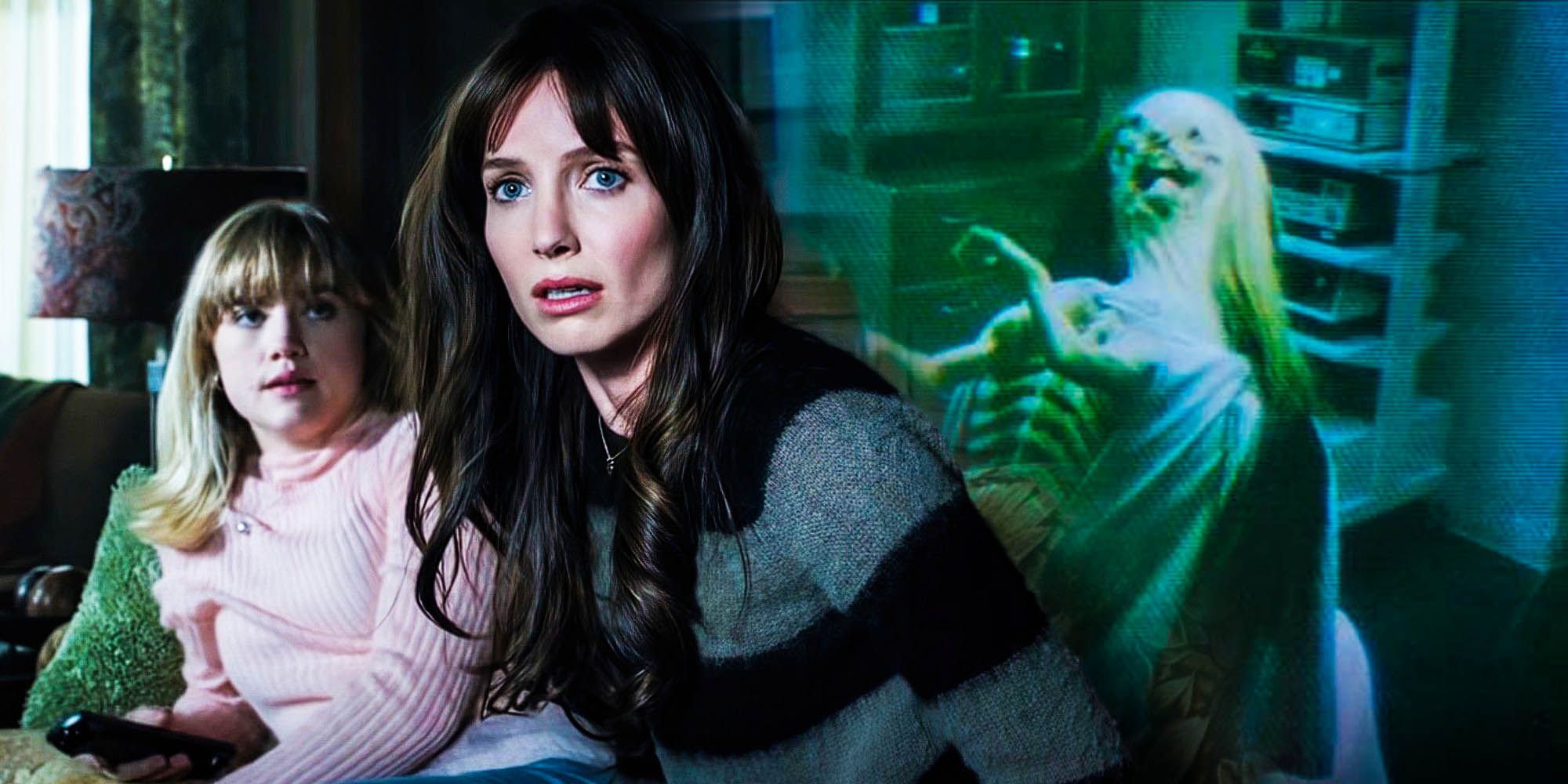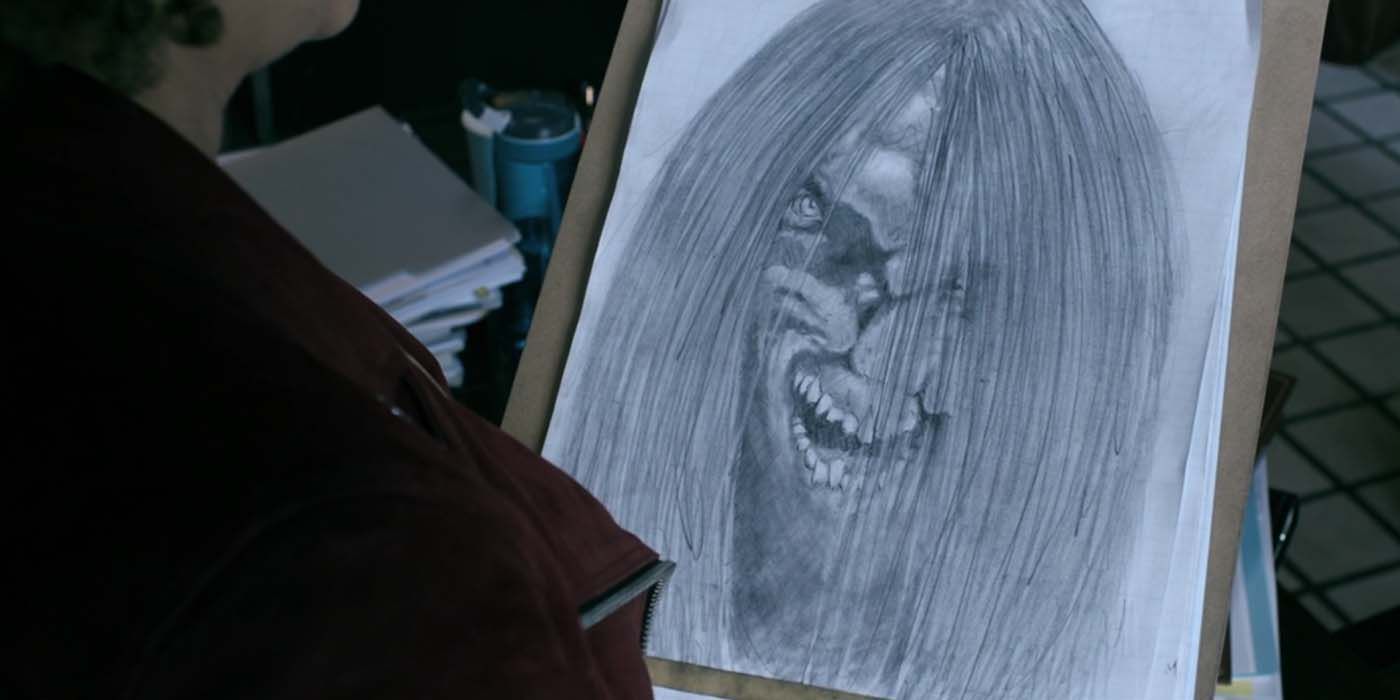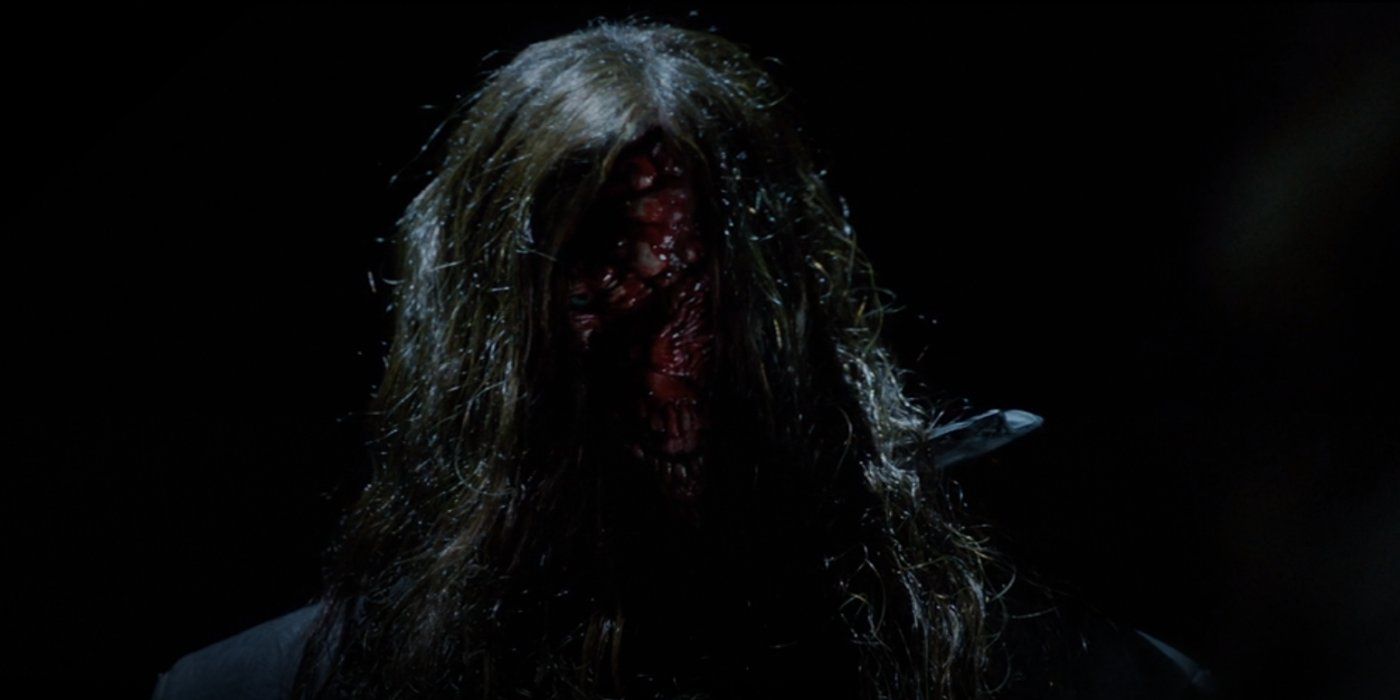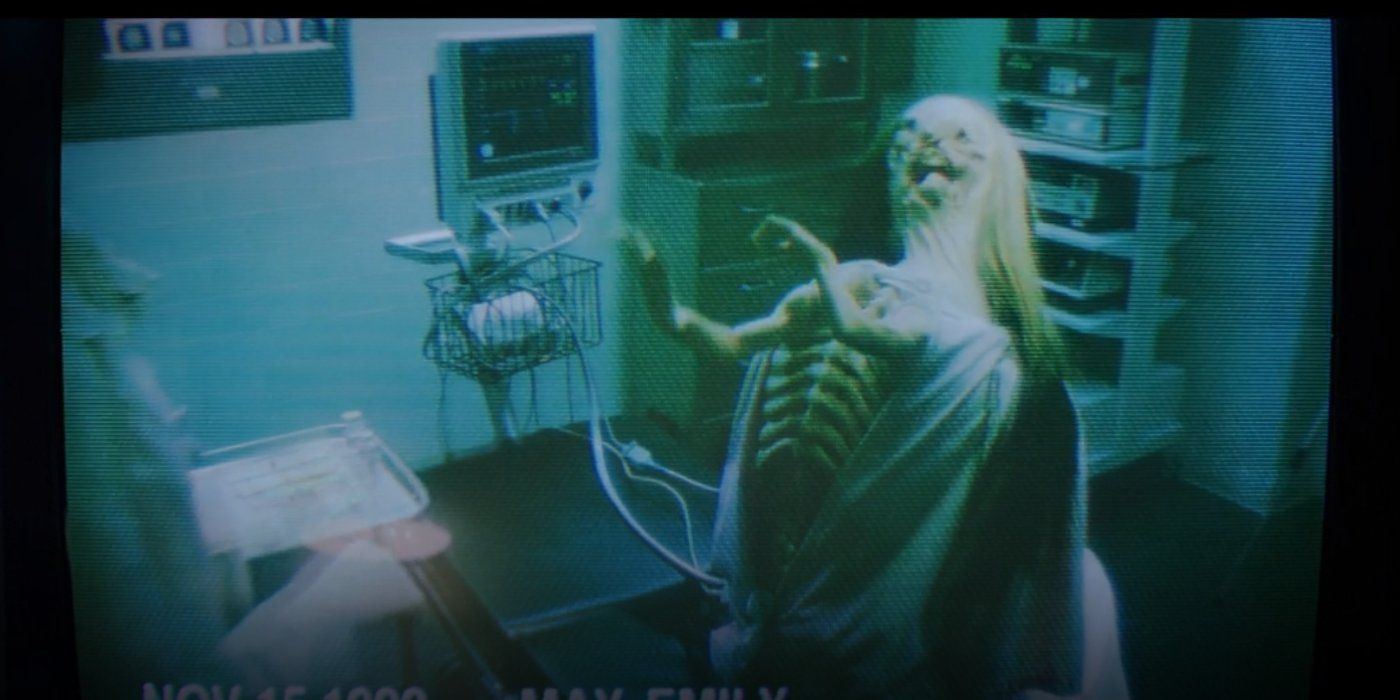Malignant’s biggest twist hinges on the real-life science of parasitic twins. This concept is the main idea behind the nature of the movie’s villain, Gabriel, whose true identity served as the overarching mystery that plagued Madison (Annabelle Wallis) and Sydney (Maddie Hasson) throughout the film. What little knowledge they had of Gabriel led to different theories about what he could be.
As the story unfolded, it became clear this evil entity wasn’t a ghost or a demon, nor was he simply Madison’s “imaginary friend” from childhood. A shocking third act twist in Malignant comes from a video observed by Sydney and Jeanne (Susanna Thompson) confirmed the truth that Gabriel is Madison’s parasitic twin, who was partially removed from her body through surgery prior to her adoption. Figuring this out culminated in the final encounter with Gabriel at the hospital, where Madison – who had grasped what was going on – took control of Gabriel and locked him in a “mental prison” within her mind, thus rendering him harmless for the time being.
The secret of Gabriel in Malignant’s third act was born from the mind of director, James Wan. The helmer has explained in interviews that the story for his latest film came about as a result of a talk he had with his wife - Malignant co-writer and co-star Ingrid Bisu - who told him about parasitic twins. After hearing about this unfortunate condition, Wan developed the “most messed up story” he could think of. Here’s how much of Gabriel's story borrows from science and how realistic it is.
Malignant's Gabriel Twist Explained: He's A Parasitic Twin
In the video watched by Sydney and Jeanne, Dr. Weaver delivered a detailed explanation of what Gabriel actually is. She said that Gabriel, the lifeform attached to Madison’s back in the video, is made up of hair, teeth, bones, tissues and muscles. Weaver explained a parasitic twin like Gabriel forms when two developing embryos don’t separate correctly in the womb. As a result, one embryo becomes “dominant”, leaving the other “underdeveloped” going forward. In her words, the difference between this and conjoined twins is that the parasitic sibling can only live by feeding on the dominant twin, which explains why this relationship is described as “parasitic”.
Another scientist in the video stated that since Gabriel and Madison share the same brain, he has the ability to lock her consciousness in a “mental prison”, thus allowing him to take the reins of her body. Making matters worse for Madison during this time was Gabriel’s effects on her body. Because the strain was considered potentially life-threatening to Madison, they had no choice but to perform surgery and remove as much of Gabriel as they could. As for why he wasn’t totally eliminated, this was attributed to concerns that doing so might inadvertently kill her. Unbeknownst to them, fragments they left behind and repressed into Madison’s skull was significant enough for Gabriel to maintain a latent connection to Madison. He retained the ability to control her to a certain extent, but he slowly lost his hold over her. That changed when head trauma caused by her abusive husband “awakened” him.
Parasitic Twins Explained Using Real Science (They Do Exist)
What Dr. Weaver said about parasitic twins in Malignant is based on scientific facts. In real life, the failed separation of embryos during development and one being partly absorbed by the other is what results in the incredibly rare formation of a parasitic twin. There are different variations of how this can happen, but in most cases, a parasitic twin is only comprised of a few body parts and organs, such as a torso, a head, and a pair of legs or arms. It isn’t conscious nor does it have what it takes to sustain life independently, which is why it has to rely on blood supply from the dominant sibling.
Obviously, supporting itself and an underdeveloped twin is too much for the human body to do on a long-term basis. It’s for this reason surgical removal is necessary for the dominant twin to live healthily. Often - despite what Malignant's main twist shows - this can be done without lingering complications, but due to all the different ways a parasitic twin can be attached to the host body, complete, safe removal isn’t always possible.
Is Malignant's Gabriel Twist Scientifically Possible & Realistic?
In light of the scientific connections, it’s worth exploring how much of Gabriel in Malignant is based in reality. First of all, Gabriel’s appearance looks a bit more monstrous and scarier than real parasitic twins, which is a change that goes hand-in-hand with James Wan’s menacing interpretation of the idea. But, Malignant gets the core elements of this medical condition right, as Dr. Weaver does indeed define parasitic twins correctly. What was said about how Gabriel formed matches up perfectly with real science, as does the reason for why he had to be removed. So in theory, Malignant's Madison secretly having a parasitic twin that had to be surgically detached from her back when she was young is possible, though it’s likely that if this was a real case, the surgery would have been performed shortly after her birth.
While the explanation for Gabriel is medically accurate, the same can’t be said for Malignant’s plot. As noted above, parasitic twins aren’t conscious, which means they don’t have any awareness of what’s happening to them. Since they’re not capable of independent thought, they don’t have the potential to communicate with the host body, much less take control of it and physically distort limbs like Gabriel could in the movie. In a way, Wan and Bisu's Malignant’s story is a creative extension of the parasitic twin concept that explores several “what if” scenarios related to this idea, such as what it would mean if a parasitic twin was conscious if it was an evil being bitter about its lack of independence and what would happen if it somehow had the means to assume control. In short, the conflict with Gabriel in Malignant isn’t a realistic or plausible situation but is instead a clever (albeit twisted) invention of James Wan.




